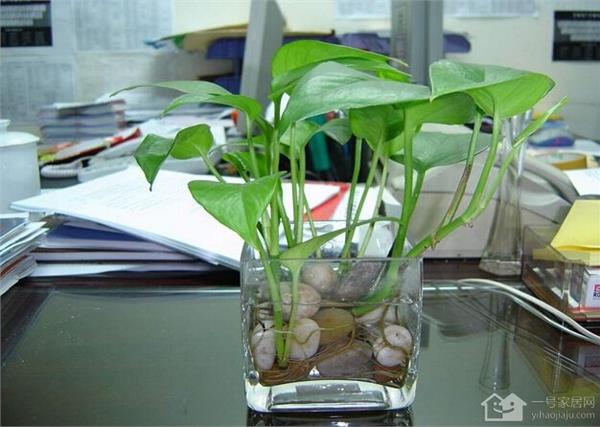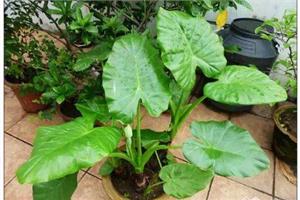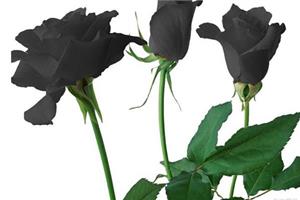The method of hydroponic flower culture what kind of plant is the most suitable for glass vase?
Water culture flower glass bottle culture is a common method of soilless cultivation of flowers, because the glass bottle is generally transparent, but also has a variety of unique shapes, so collocation with green plants has a very high ornamental value.

I. benefits of hydroponic flower culture in glass bottles
1. The hydroponic flower glass bottle is more beautiful in shape design, and it is made of glass transparent material, so it has made a great improvement in permeability, and can highlight the beauty of flowers in shape aesthetic design. at the same time, it also provides effective help for the purification of the air in the house. Glass bottles are relatively cheap in shape, so they are liked by ordinary families, coupled with a strong sense of vase design, and are liked by more and more friends.
two。 The use of hydroponic floral glass bottles to help can make the effect of farming better. In addition, the hydroponic flower glass bottle looks transparent in appearance, which is not only conducive to the absorption of plants in the sun, but also achieves an ideal effect in the cultivation of flower color.
2. the method of cultivating hydroponic flowers in glass bottles.
1. In the process of flower culture, the hydroponic flower glass bottle separates the flowerpot stained with soil from the plant, then cleans the soil of the flower root with clean water, and makes the root cleaner by washing. If the flowers of seedlings will be relatively weak in physique, adding appropriate nutrient solution can improve the growth rate of flowers and improve the production quality of flowers.
two。 Hydroponic flower glass bottles should often change water, which means to change the water with nutrient solution in the bottle. Under normal circumstances, change the water every 5 to 10 days in spring and autumn, about 5 days in summer, and 10 to 15 days in winter. Domestic hydroponic flowers should use soft water as water source, and tap water in line with national standards can be used generally. After placing the tap water for two hours to half a day, after its temperature is close to room temperature and the chlorine in the water is volatilized, the bought nutrient solution is added in proportion to become a nutrient solution that can raise hydroponic plants.
3. In the technology of hydroponic floral glass bottle culture of flowers and plants, the lack of certain nutrient elements will produce physiological obstacles, affect growth, development and flowering, and even lead to death. Therefore, it is necessary to adjust the nutrients of the nutrient solution in time. For example, nitrogen-deficient plants grow slowly, their leaves turn yellow, and their leaves fall off seriously.
4. Phosphorus deficiency often shows abnormal dark green, sometimes gray or purple spots, delaying ripening. If there is a lack of nutrition, it should also be carefully checked and then replenished. Because some are not necessarily caused by lack of nutrition, it may be due to inappropriate pH, and some are caused by the lack of several elements at the same time. We must find out the situation and prescribe the right medicine to the case.
What kind of plants are most suitable for growing glass vases
1. White crane taro. It is a perennial plant of Araceae. Its leaves are basal, leathery, long elliptic-lanceolate, acuminate at both ends, dark green and mercerized, with distinct midrib and petiole. Spawn erect, tall above leaves, broadly ovate white or greenish; spikes milky yellow, slender, blooming in spring and summer. White crane taro is regarded as a "innocent flower". It grows well in hydroponics, and the effect of increasing air humidity is very obvious.
two。 Douban green. It is an evergreen perennial of Piperaceae with a height of no more than 30 cm and an erect or creeping stem. Leaves alternate, opposite or whorled, spikes terminal or opposite leaves, flowers very small, white, born in sunken inflorescence axis. Hydroponic culture is easy to root, grow well, leathery leaves with luster, strong adaptability, can tolerate the indoor environment, like warm, moist, semi-shady environment, not resistant to direct sunlight. The suitable temperature is about 25 ℃, and not less than 10 ℃ in winter.
3. Dai Fan Ye. It is a perennial evergreen herb of Araceae, with succulent stems, erect stems and short internodes. Leaves ovate-oval, edge slightly wavy, dark green with irregular yellow or white spots and stripes, strong color contrast. Like warm, high humidity, semi-shady environment, not resistant to direct sunlight, suitable for growth humidity of 25-30 ℃, overwintering temperature can not be lower than 10 ℃, especially suitable for hydroponic maintenance.
Hydroponic flower glass bottle culture because the shape of glass products is different, and as long as cleaned, you can see the flower roots soaked in clear water, green and transparent water color, always give people a cool feeling, very suitable for the hot summer on the table.
Related
- Wuhan Hospital Iron Tree Blooming Result Was Instantly Frightened by the Gardener Master
- Which variety of camellia is the most fragrant and best? Which one do you like best?
- What is the small blue coat, the breeding methods and matters needing attention of the succulent plant
- Dormancy time and maintenance management of succulent plants during dormancy
- Minas succulent how to raise, Minas succulent plant pictures
- What are the varieties of winter succulent plants
- How to raise succulent plants in twelve rolls? let's take a look at some experience of breeding twelve rolls.
- Attention should be paid to water control for succulent plants during dormant period (winter and summer)
- Watering experience of twelve rolls of succulent plants
- Techniques for fertilizing succulent plants. An article will let you know how to fertilize succulent plants.



